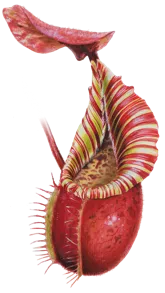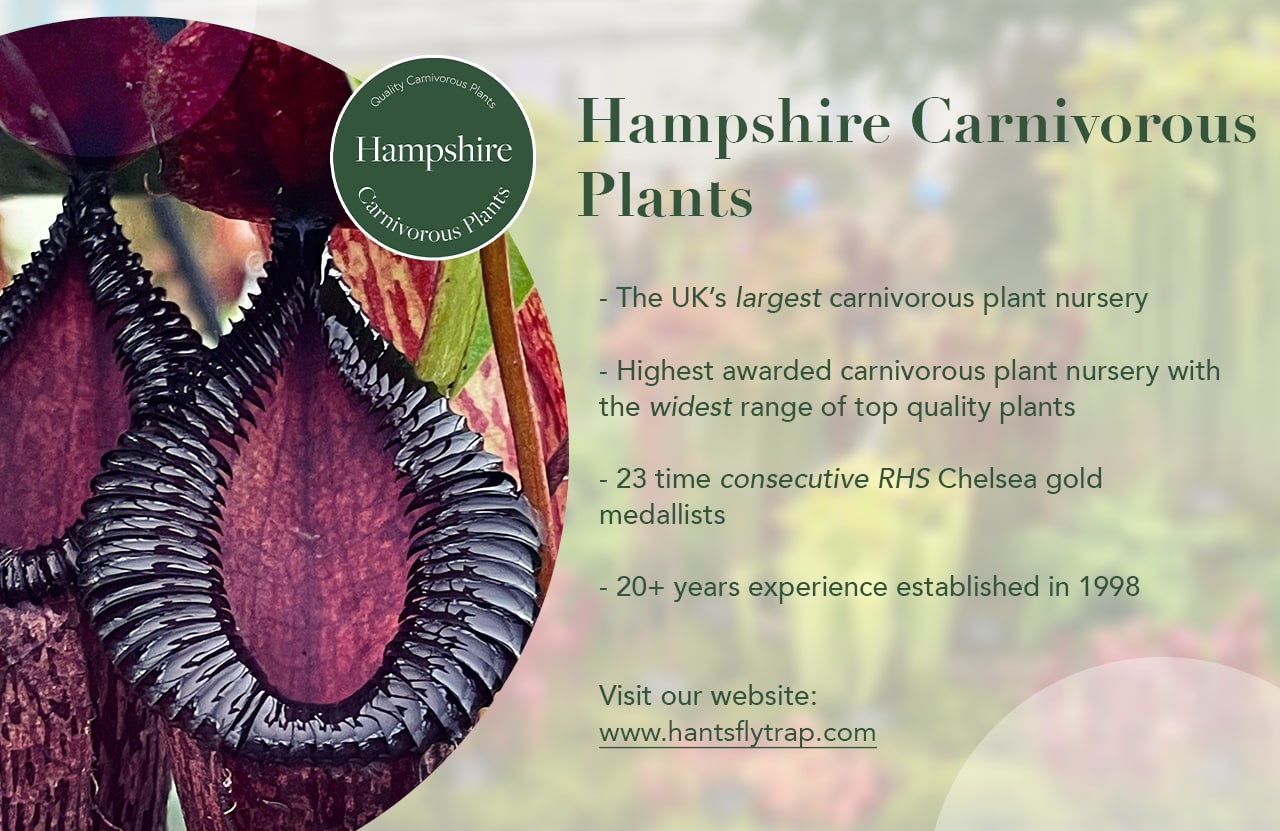Nepenthes glandulifera
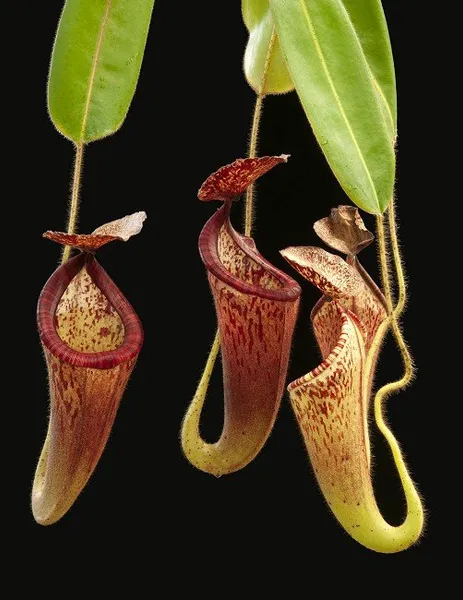 A Borneo Exotics stock photo showing BE-3766
A Borneo Exotics stock photo showing BE-3766 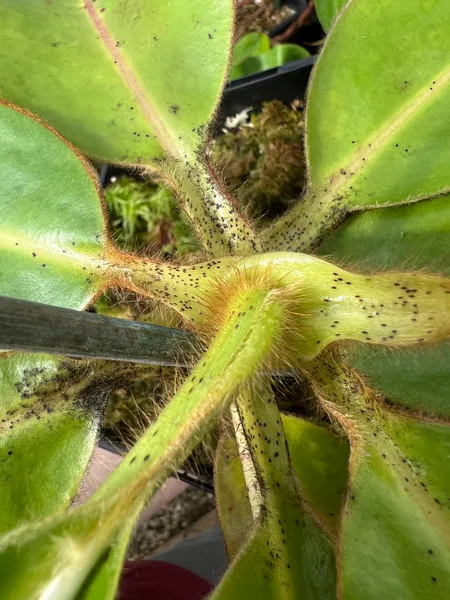 A close-up of the leaves showing the hair and nectar glands
A close-up of the leaves showing the hair and nectar glands 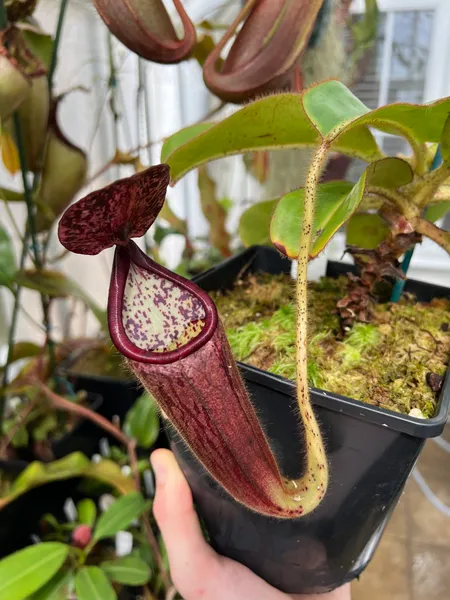 A nice hairy pitcher on my N. glandulifera, BE-3879
A nice hairy pitcher on my N. glandulifera, BE-3879 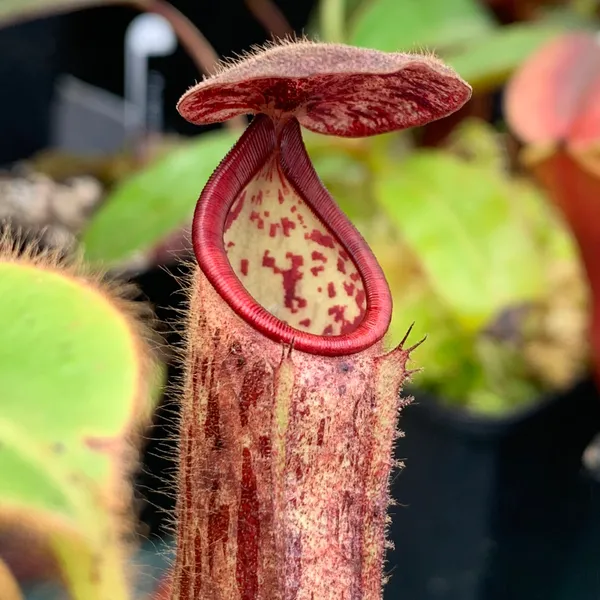 Cute fuzzy baby plant
Cute fuzzy baby plant 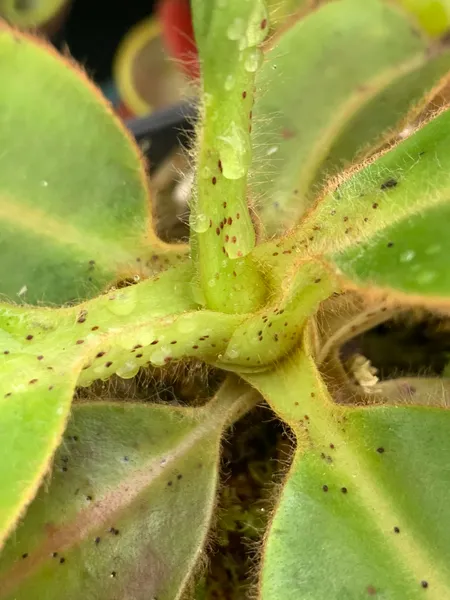 Even on very young plants, the glands and hair are clearly evident
Even on very young plants, the glands and hair are clearly evident 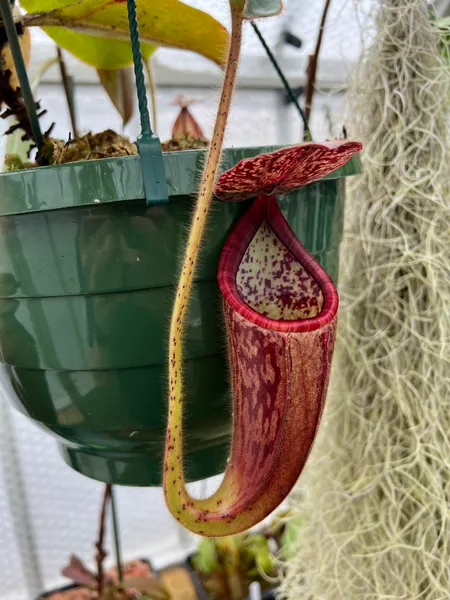 I quite like the peristome on N. glandulifera, which is striped in different shades of red
I quite like the peristome on N. glandulifera, which is striped in different shades of red Description & Care
Nepenthes glandulifera is a unique plant of which I’ve always been fond.
The species originates from the Hose Mountains of Sarawak, in Borneo, where it grows on a mountain so remote that it’s believed to have been observed up-close in the wild only once. Chi’en Lee, the famed researcher and wildlife photographer who discovered the species, believed at the time that the plants were infected with some kind of disease. This was on account of the strange black spots which covered the entirety of the plant. These spots, however, later turned out to be nectar glands which put out a sweet scent and act as bait for the plant’s insect prey. It is these glands after which Nepenthes glandulifera is named.
The glands are not the only distinctive characteristic of this species. All parts of the plant - from the leaves down to the tendrils and pitchers - are covered in a thick coat of rusty brown hairs (or ‘indumentum’). I’d recommend this excellent video about N. glandulifera if you’re interested in seeing a mature specimen.
There is very little variability among plants in cultivation. This is because all the N. glandulifera in cultivation today can be traced back to a single mother plant. When the species was observed in the wild, a single female (the type specimen) was in bloom, and seeds were collected for science. These were put into tissue culture and the resulting individuals were bred with each other, and it is the offspring of these crosses that Borneo Exotics offers for sale today.
I’ve found N. glandulifera to be a very robust and hardy species. It definitely prefers the warmer end of highland conditions, and grows best during summertime for me. It would probably thrive in intermediate conditions. It’s also very tolerant of lower humidity, probably on account of its hairy leaves, and passes this trait onto its hybrid offspring. I’ve grown a cross between N. veitchii and N. glandulifera - the hairiest of plants you can imagine - on a sunny windowsill with no supplemental humidity for many years.
How I Grow It
| Media | Long fibre sphagnum moss, perlite, and - optionally - orchid bark (2:1:1). |
| Water | Damp but not wet. |
| Light | Can take quite a lot, relative to many other species - produces a lot of nectar in bright light. |
| Fertiliser | Maxsea or liquid orchid feed in the pitchers, every two weeks. |
| Temperatures | 12°C (54°F) minimum year-round, but prefers the warmer time of year - would probably grow happily as an intermediate. |
| Humidity | 70% during the day, higher at night, but very tolerant of lower levels than this. |
Learn more about cultivation with my guide to growing Nepenthes.
Day & Night Temperatures
Nepenthes glandulifera is an intermediate species, found at elevations of between 1100 and 1700 meters. This range is highlighted in orange above, and equates to temperatures of approximately 24 - 30°C during the day, and 14 - 20°C at night.
Habitat
| Native to | Borneo |
| IUCN Red List status | Least Concern |
| Natural hybrids | None known |
Buying N. glandulifera
| Availability | Widely available and not expensive. |
| Borneo Exotics codes |
|
| Recommended nursery | California Carnivores Hampshire Carnivorous Plants |
